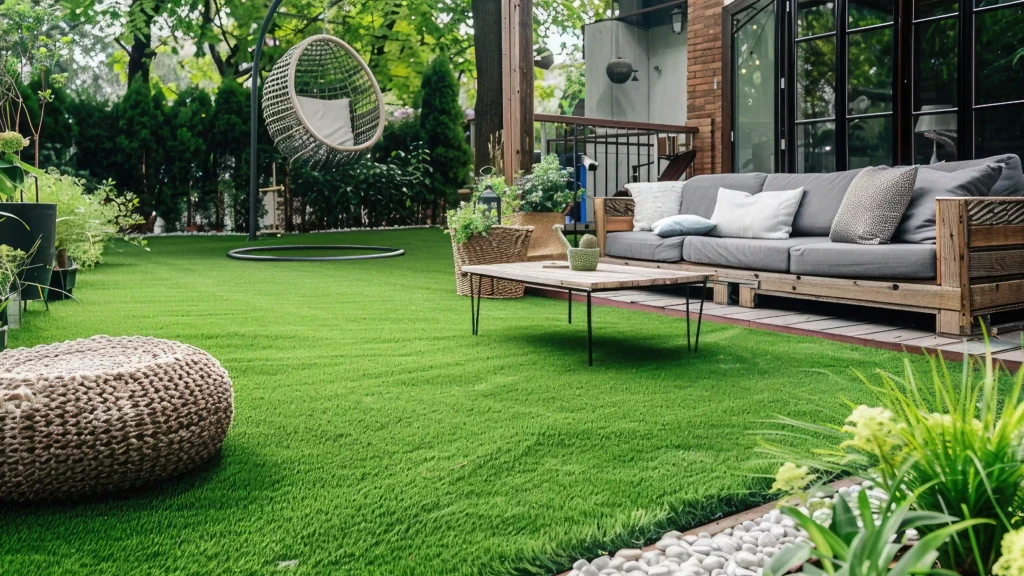In recent years, the focus on sustainable and eco-friendly practices has expanded beyond just the interior of our homes. Greener Grass Landscaping is at the forefront of this movement, offering innovative and environmentally friendly solutions for creating beautiful, functional outdoor spaces. This comprehensive guide will explore the many facets of Greener Grass Landscaping, providing insights into its benefits, techniques, and how it can transform your lawn and garden into a greener, more sustainable haven.
Understanding Greener Grass Landscaping:
Greener Grass Landscaping involves the integration of sustainable practices into the design and maintenance of outdoor spaces. The goal is to create landscapes that are not only visually appealing but also environmentally friendly. This approach focuses on reducing resource consumption, minimizing environmental impact, and promoting biodiversity. By incorporating eco-friendly techniques and materials, Greener Grass Landscaping helps to create outdoor areas that are both attractive and sustainable.
Benefits of Greener Grass Landscaping:
One of the primary benefits of Greener Grass Landscaping is its positive impact on the environment. Traditional landscaping practices often involve the use of chemical fertilizers, pesticides, and excessive water consumption, all of which can harm local ecosystems. Greener Grass Landscaping, on the other hand, emphasizes the use of organic fertilizers, natural pest control methods, and water-saving irrigation systems. This not only reduces the environmental footprint but also promotes healthier soil and plant life.
Another significant benefit is the reduction in maintenance requirements. Sustainable landscaping techniques often involve the use of native plants and low-maintenance materials that require less frequent upkeep. This can result in lower maintenance costs and less time spent on yard work, allowing homeowners to enjoy their outdoor spaces without the constant need for intervention.
Techniques for Implementing Greener Grass Landscaping:
Implementing Greener Grass Landscaping involves a variety of techniques and practices designed to enhance sustainability. One such technique is xeriscaping, which involves designing landscapes to minimize water use. By incorporating drought-tolerant plants and efficient irrigation systems, xeriscaping helps to conserve water while still creating a beautiful and functional outdoor space.
Another key technique is the use of organic and natural materials. Organic fertilizers, compost, and mulch not only improve soil health but also reduce the need for synthetic chemicals. Additionally, natural pest control methods, such as introducing beneficial insects or using neem oil, can help manage garden pests without harming the environment.
Incorporating native plants is also a central aspect of Greener Grass Landscaping. Native plants are well-adapted to local climate conditions and soil types, making them more resilient and less resource-intensive. They also provide essential habitat and food sources for local wildlife, contributing to overall biodiversity.
Design Principles for Greener Grass Landscaping:
Designing a Greener Grass landscape involves several key principles that prioritize sustainability and environmental responsibility. One important principle is to create functional and versatile outdoor spaces. This includes designing areas that can serve multiple purposes, such as a vegetable garden that also provides aesthetic value or a rain garden that helps manage stormwater runoff.
Another principle is to focus on soil health. Healthy soil is the foundation of a successful landscape, and it can be achieved through practices such as composting, mulching, and minimizing soil disturbance. By enhancing soil health, you can promote robust plant growth and reduce the need for synthetic fertilizers.
Incorporating water management techniques is also crucial. This includes designing efficient irrigation systems, using rain barrels to collect and reuse rainwater, and creating permeable surfaces to reduce runoff. Proper water management helps to conserve resources and prevent erosion.
Choosing the Right Plants for Greener Grass Landscaping:
Selecting the right plants is essential for creating a successful Greener Grass landscape. Native plants are often the best choice, as they are adapted to local conditions and require less water and maintenance. Additionally, they provide important ecological benefits, such as supporting local wildlife and improving soil health.
When choosing plants, consider their growth habits, water requirements, and compatibility with your existing landscape. For example, drought-tolerant plants are ideal for xeriscaping, while ground covers and low-growing plants can help reduce soil erosion and suppress weeds.
Incorporating a variety of plant species can also enhance the biodiversity of your landscape. This diversity not only adds visual interest but also supports a wider range of pollinators and beneficial insects.
Maintaining a Greener Grass Landscape:
Maintaining a Greener Grass landscape involves ongoing efforts to ensure sustainability and environmental responsibility. Regular maintenance tasks may include mulching, composting, and monitoring plant health. Mulch helps to retain soil moisture, suppress weeds, and improve soil fertility. Composting provides a natural source of nutrients for plants and reduces the need for synthetic fertilizers.
Monitoring plant health is also important for preventing and managing pest issues. By using natural pest control methods and promoting beneficial insects, you can address pest problems without resorting to harmful chemicals. Additionally, keeping an eye on soil conditions and water usage can help prevent issues such as erosion and nutrient imbalances.
Innovative Trends in Greener Grass Landscaping:
As the field of landscaping continues to evolve, new trends and innovations are emerging that further enhance the sustainability of outdoor spaces. One such trend is the use of green roofs and living walls, which involve growing vegetation on building surfaces to improve insulation and reduce heat absorption. These features can contribute to energy savings and enhance urban biodiversity.
Another innovation is the integration of smart technology into irrigation systems. Smart controllers and sensors can help optimize water usage by adjusting irrigation schedules based on weather conditions and soil moisture levels. This not only conserves water but also ensures that plants receive the right amount of hydration.
Creating a Greener Grass Landscape: A Step-by-Step Guide:
Creating a Greener Grass landscape involves several steps, from planning and design to implementation and maintenance. Start by assessing your existing outdoor space and identifying areas for improvement. Consider factors such as soil quality, sunlight exposure, and water availability.
Next, develop a design plan that incorporates sustainable practices and aligns with your goals. Choose native plants, implement water management techniques, and select materials that are environmentally friendly. Once your design is in place, begin the installation process, ensuring that you follow best practices for soil preparation and plant placement.
After installation, focus on ongoing maintenance to keep your landscape thriving. Regularly monitor plant health, manage pests using natural methods, and make adjustments as needed to ensure that your Greener Grass landscape continues to meet your needs and environmental goals.
Conclusion:
Greener Grass Landscaping offers a multitude of benefits for both homeowners and the environment. By incorporating sustainable practices and innovative techniques, you can create outdoor spaces that are not only beautiful but also eco-friendly. Whether you are looking to reduce your environmental footprint, enhance your garden’s biodiversity, or simply enjoy a low-maintenance landscape, Greener Grass Landscaping provides a comprehensive approach to achieving your goals. Embrace the principles of sustainability and transform your outdoor spaces into a greener, more vibrant haven for all to enjoy.Top of Form
Bottom of Form



